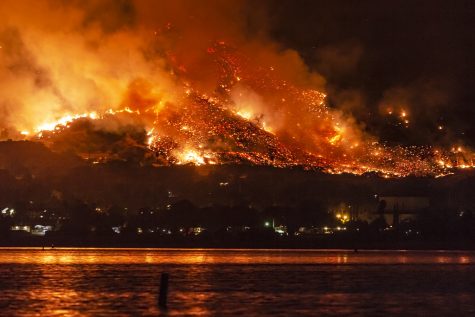Tsunami Devastates Indonesian Island
October 9, 2018
On September 28, Palu, a city on the Indonesian island of Sulawesi, suffered a 7.5 magnitude earthquake, followed by three waves of tsunamis. Though a tsunami alert was issued after the quake, many residents may not have received it because the quake took down all power and communication lines.
Based on the size of the earthquake, the height of the tsunami was surprising. While scientists did predict a tsunami, they did not predict that it would be up to 20 feet tall in some places. The earthquake magnitude clearly was not the only factor. Geophysicist Jason Patton states that the earthquake may have caused an undersea landslide, displacing enough water to create a tsunami. Another theory is that the horizontal movement of the fault caused an altitude change in the sea floor by shifting the deeper areas. Palu lies at the end of a narrow bay. The tsunami likely could have been focused and amplified by travelling down the bay.
Indonesia lacks an effective tsunami prediction system. While the U.S has a network of pressure sensors on the bottom of the ocean, Indonesia has 22 pressure-sensing buoys that are dysfunctional due to lack of maintenance and vandalism. The officials could only make a decision based on a tidal gauge 200 km from Palu. Professor Louise Comfort of the University of Pittsburgh is involved in a project to implement undersea tsunami sensors in Indonesia. Although she discussed this project with three Indonesian government agencies, the plans made were delayed due to disagreement.
Despite the high risk for tsunamis along the coast of Sulawesi, neither sirens nor above-ground shelters were established in Palu. The addition of sirens could provide a warning system even if communication lines are down. While a tsunami was predicted by tide gauges far away, the tsunami was predicted to be at most 0.5 meters tall.
Rahmat Triyono, one of the heads of the Indonesian geophysics and meteorological agency, states to BBC Indonesia that “If we had a tide gauge or proper data in Palu, of course it would have been better. This is something we must evaluate for the future.”
Indonesia lies on the Ring of Fire, and therefore is prone to both earthquakes and tsunamis. This disaster highlights Indonesia’s need for a more sophisticated warning system for natural disasters that are sure to return.










